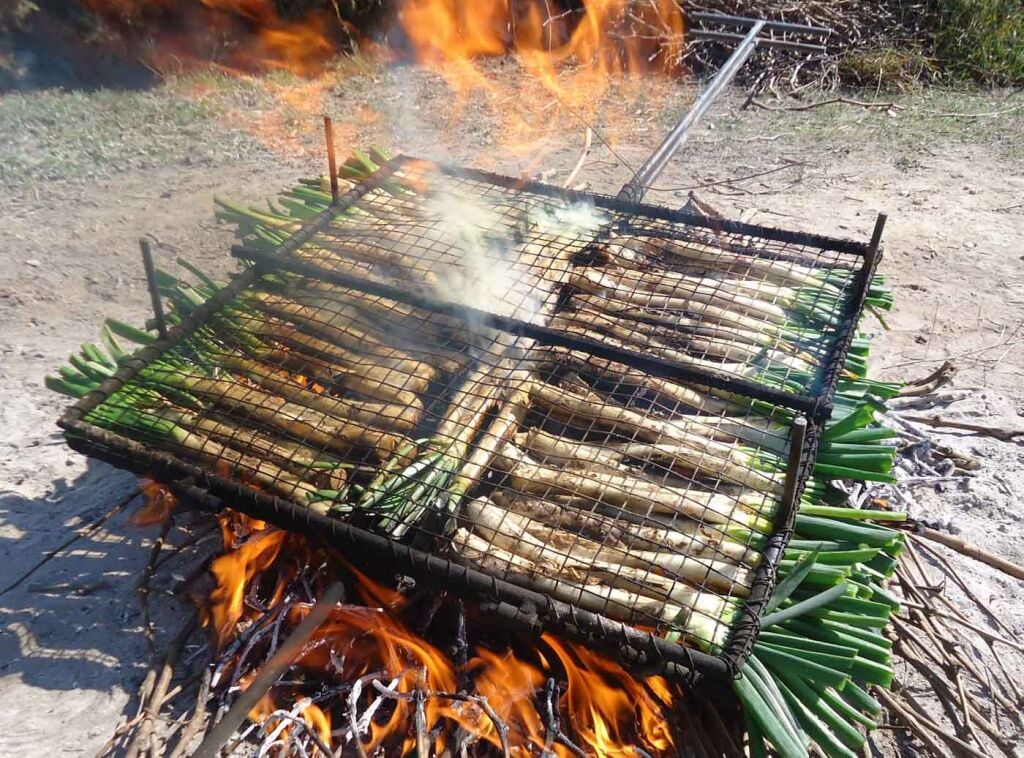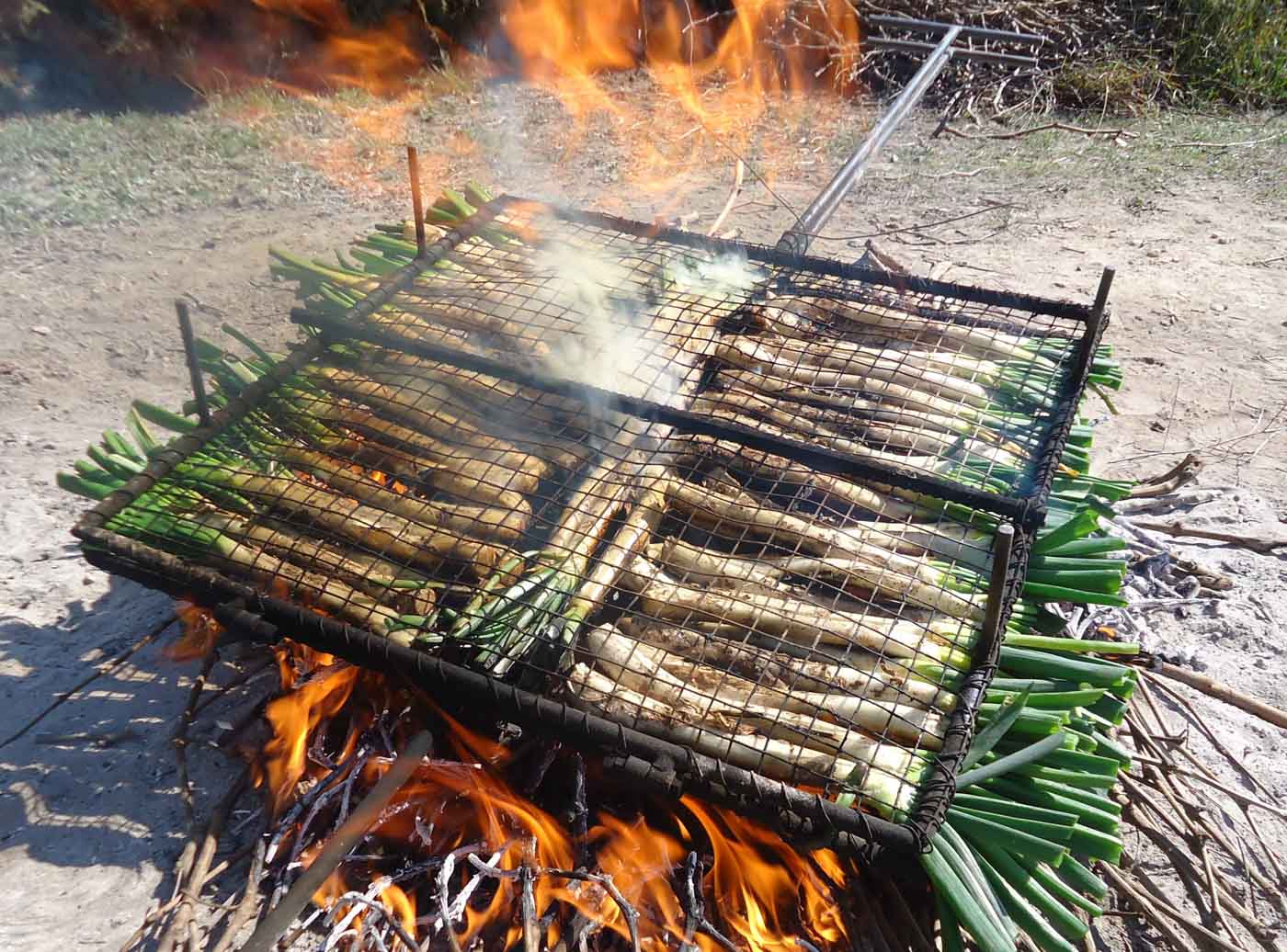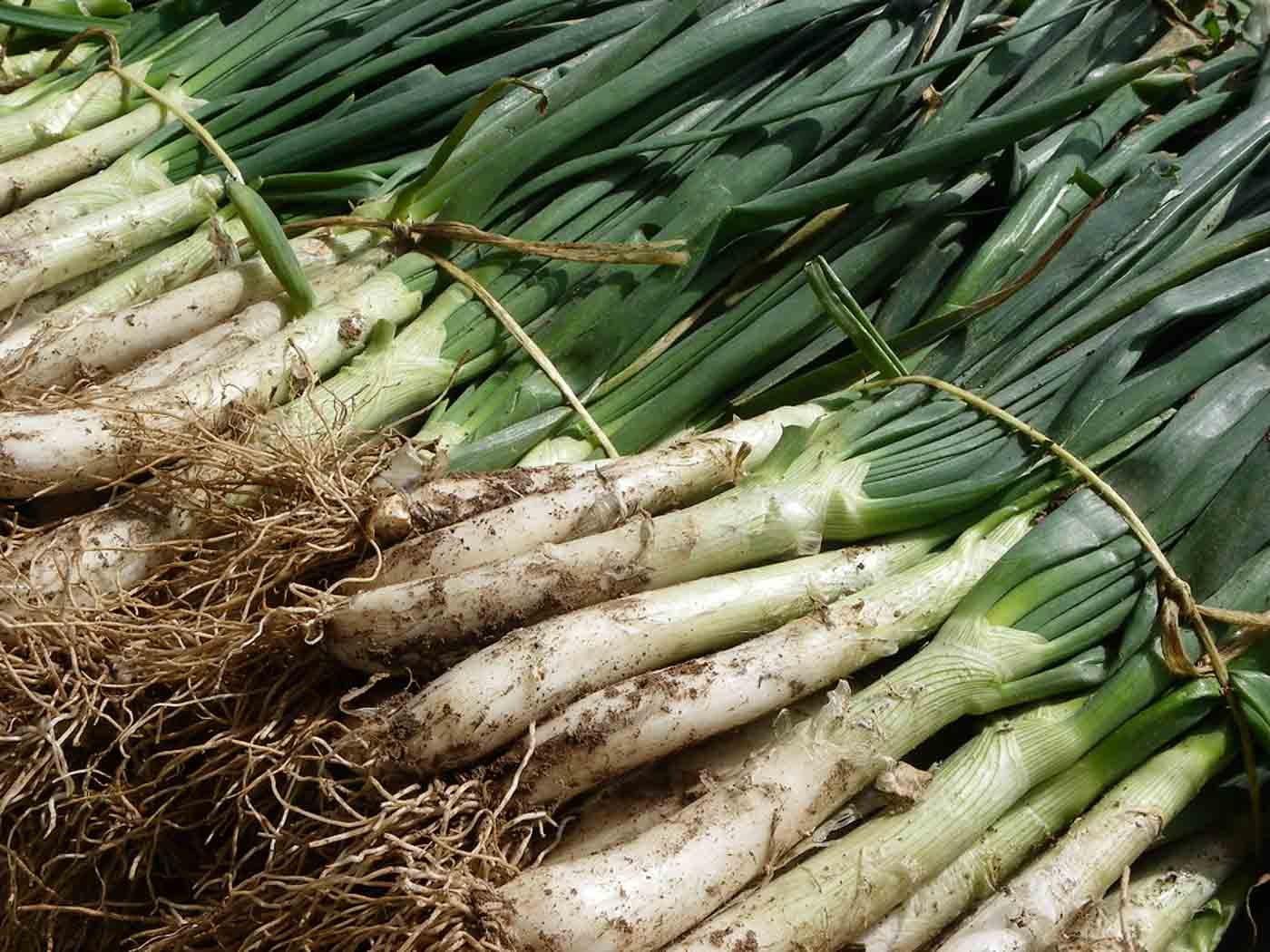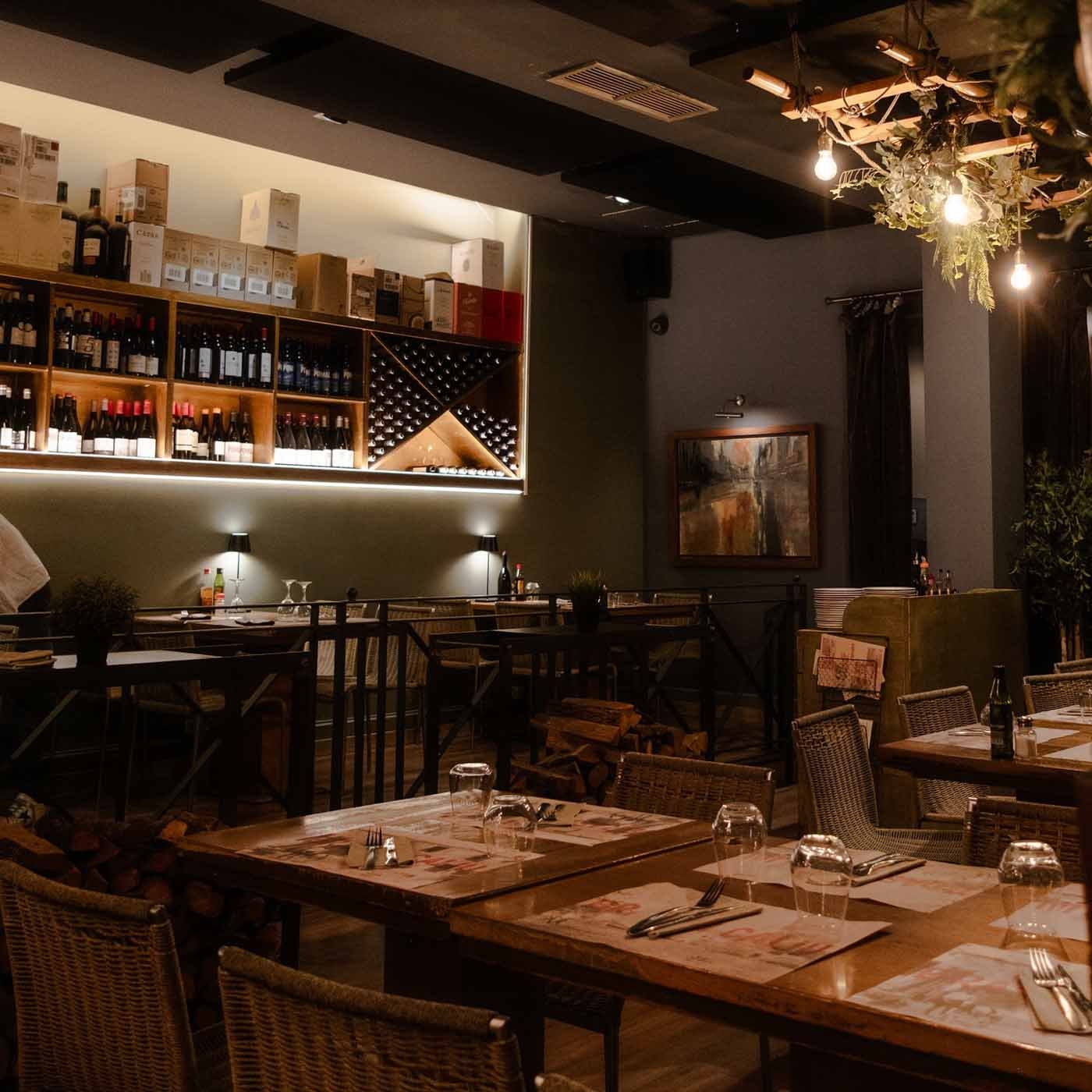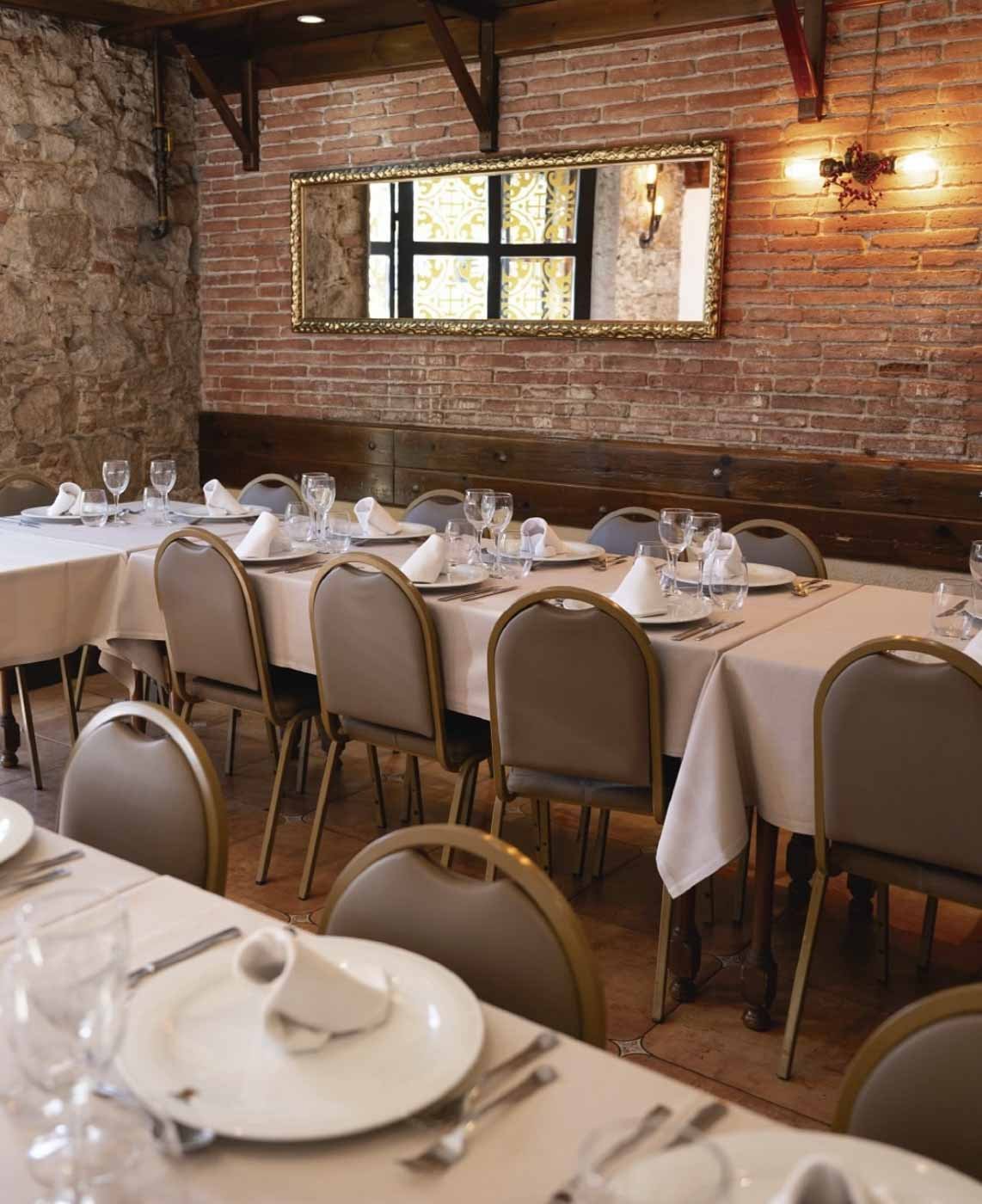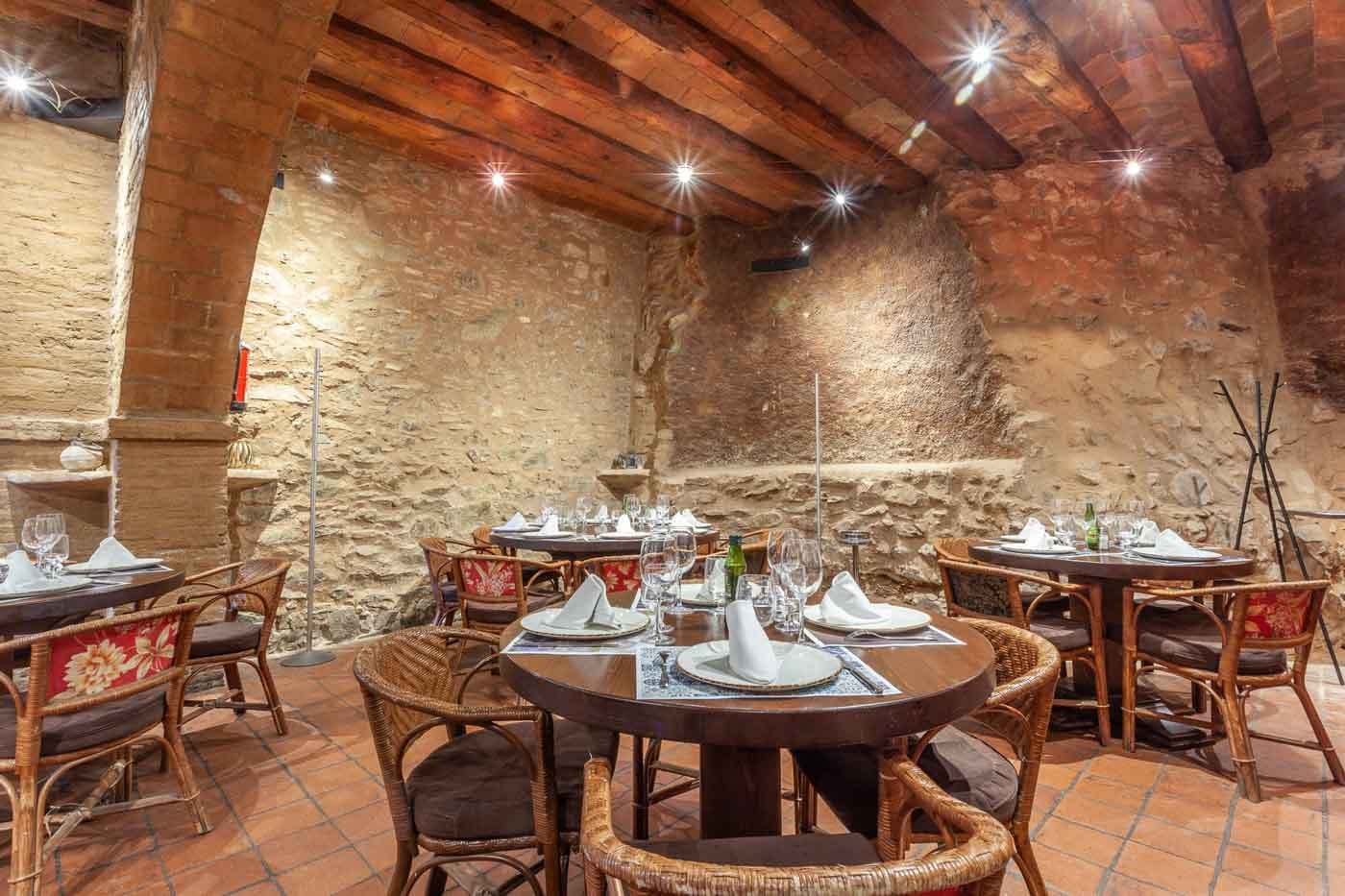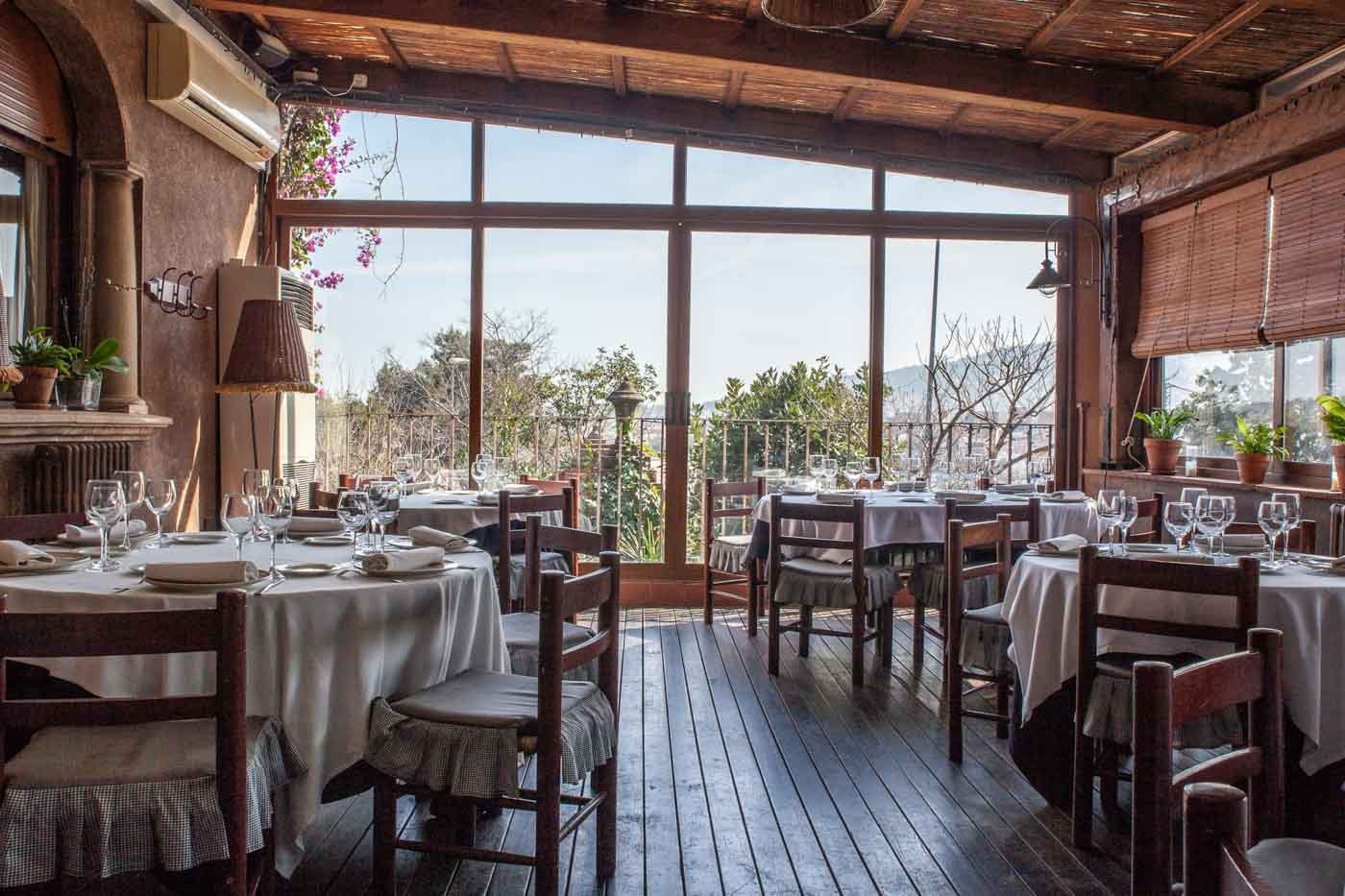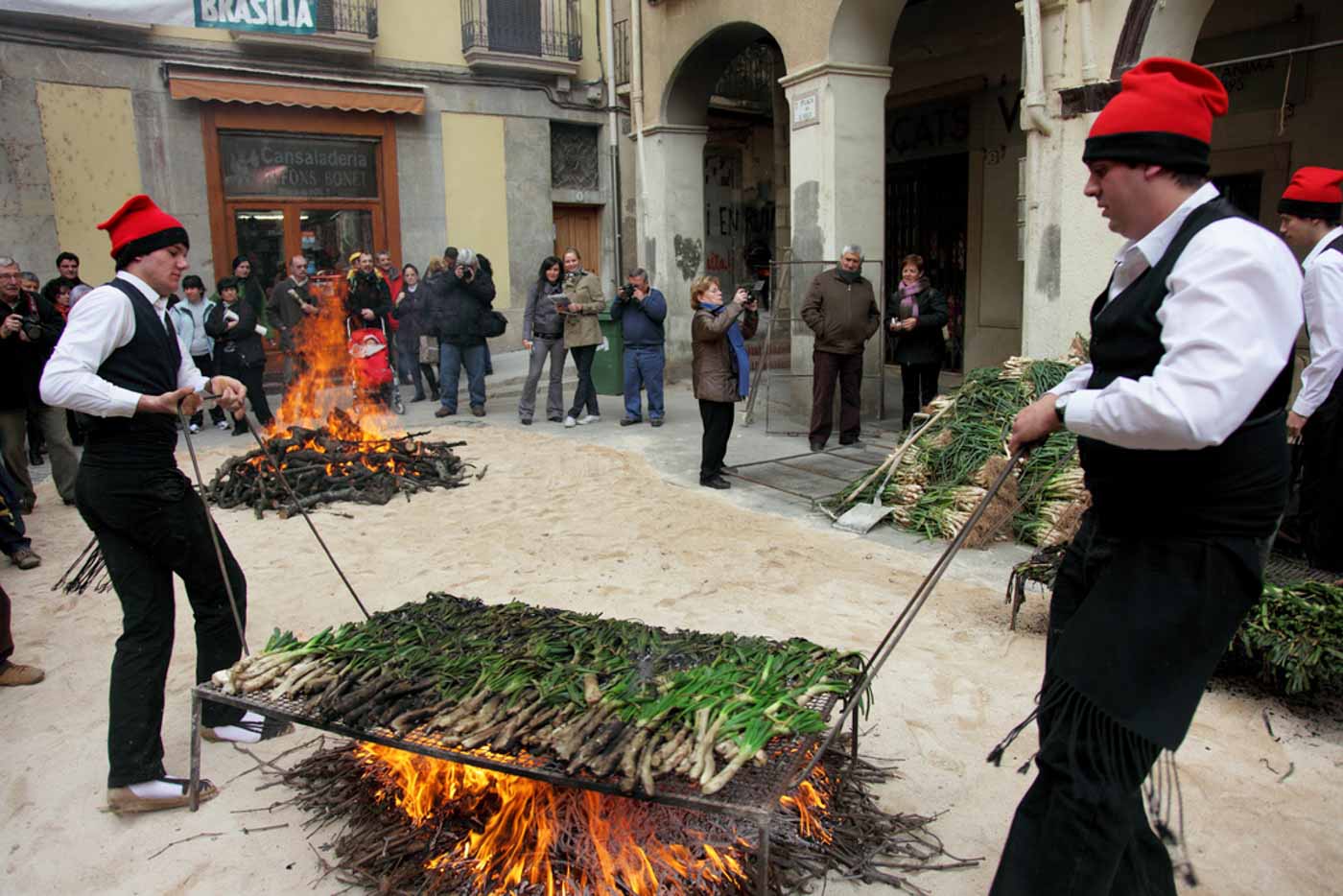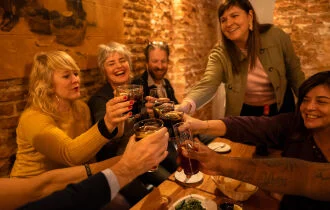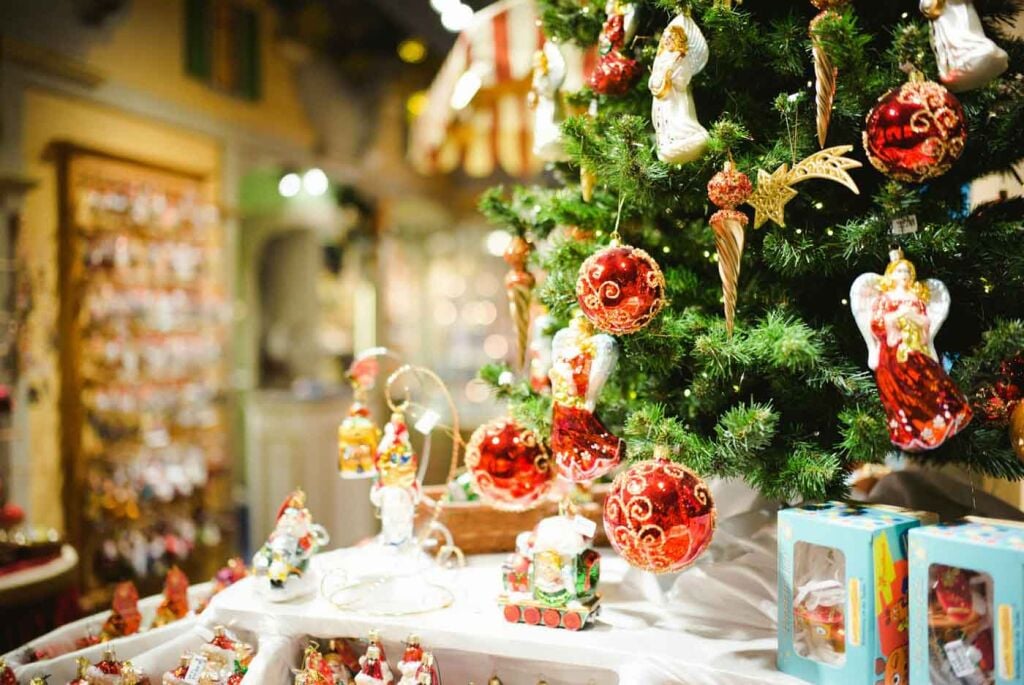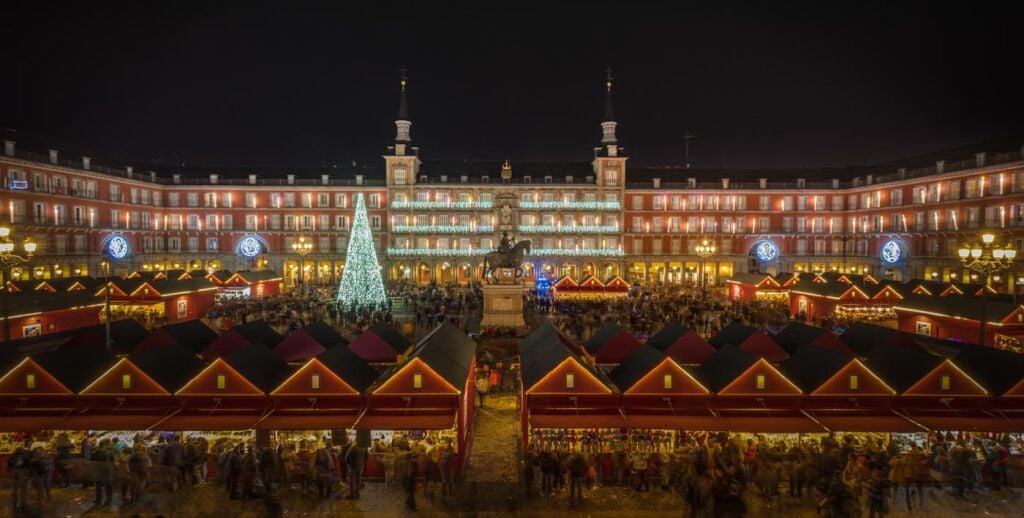Few Barcelona foods are quite as legendary as calçots. Not only are these unique, seasonal veggies indisputably delicious, but they’re also a symbol of Catalan culture and have inspired the tradition of calçotadas, a type of calçot-themed BBQ.
I’ve mentioned calçots a few times on my Barcelona food tours, but in this article, I’ll dive a little deeper into these treasured treats. In addition to providing personal experiences and tips, I’ll answer all the frequently asked questions about calçots and detail the best places to enjoy them!
What Are Calçots—and What Is a Calçotada?
Photo credit: Wikimedia Commons licensed under Attribution 2.0 Generic (no changes made)
A calçots is a specific type of green onion or scallion. Although they grow in various parts of the world, they’re most closely associated with Catalonia. They’re mild in flavor and similar to typical green onions, though they tend to be a tad sweeter and juicier.
Calçots season generally lasts from November to April, though January to March is the best time to immerse yourself in this Catalan tradition. If you’re in Barcelona in January, you’ll also have an opportunity to attend the Gran Fiesta de la Calçotada, an annual calçotada festival in Valls.
In short, a calçotada is a calçot BBQ, where these famous onions are front and center. More than just your average grill-out, calçotadas are all about community and tucking into freshly cooked calçots with tangy romesco sauce. More often than not, the calçots are also accompanied by wine and other regional dishes.
History and Origins of Calçots
Photo credit: Fernando Jiménez licensed under Attribution-NoDerivs 2.0 Generic
Calçots have been a delicacy in Catalonia since the latter end of the 19th century, when they were discovered in Valls.
As the story goes, a farmer called Xat de Benaiges was experimenting with cultivation techniques. He decided to cover these spring onions with more and more soil as they grew, in a process called ‘calçar.’
Catalans soon fell in love with the calçots that resulted, so much so that shared dining experiences centering around them became somewhat of a ritual. By the 1980s, these developed into large-scale events. By the early 2000s, calçots had achieved Protected Geographical Indication (PGI) status.
How Calçots Are Prepared and Eaten
When prepared in the traditional way, calçots are cooked over a charcoal grill until the stems are almost completely blackened. They’re then wrapped in newspaper and served with a romesco sauce, also known as salvitxada, a bold sauce made from peppers, tomato, garlic, almonds, and olive oil.
After the calçots are left to rest for a few minutes, they’ll be ready to eat. Start by peeling away the charred outer layer and dipping the stalk into the sauce before tilting your head and lowering the onion into your mouth.
Traditional calçotada menus will also include a range of other culinary favorites, from botifarra sausage and grilled meats to rich crema Catalana and chilled cava.
Where to Eat Calçots in Barcelona: Best Restaurants and Masías
3 Focs
Photo credit: 3 Focs
3 Focs is a super stylish eatery that offers exceptional service and authentic Catalonian flavors. I was fortunate to visit during the calçot season, and instantly fell in love with their delicate flavor and how it contrasted with the zingy romesco sauce. If you don’t have a reservation, I suggest coming for lunch rather than dinner.
3 Focs – 08007 Barcelona – Open every day from 1:00 pm to 12:00 am.
Fonda Can Portell
Photo credit: Fonda Can Portell
For a classic Calçotada experience, I can’t recommend the cozy, brick-clad dining area at Fonda Can Portell enough. Along with the tender calçots, my friends and I feasted on grassy grilled lamb and velvety cream Catalana, which together made for the perfect evening meal.
Fonda Can Portell – 08014 Barcelona – Open every Monday to Thursday and Sunday from 1:00 pm to 4:00 pm and every Friday and Saturday from 1:00 pm to 4:00 pm and from 8:00 pm to 10:00 pm.
Can Cortada
Photo credit: Can Cortada
Can Cortada is set in a masía, an expansive country-style manor with an elegant, old-world vibe. They offer an exquisite calçotada menu in the most traditional of surroundings. I suggest arriving here hungry to fully appreciate the generous servings of subtly sweet calçots, savory botifarra, and succulent grilled chicken!
Can Cortada – 08035 Barcelona – Open every Monday and from Wednesday to Sunday from 1:00 pm to 3:30 pm and from 8:00 pm to 10:30 pm, closed every Tuesday.
Can Travi Nou
Photo credit: Can Travi Nou
I uncovered some of the finest calçots in Barcelona at Can Travi Nou, a traditional restaurant inside a rustic yet chic farmhouse. They were so soft and paired so perfectly with the punchy romesco sauce. While I was impressed by all of the dishes that followed, the calçots most definitely stole the show.
Can Travi Nou – 08035 Barcelona – Closed every Monday, open Tuesday to Saturday from 1:00 pm to 3:30 pm and from 8:00 pm to 10:30 pm, and every Sunday from 1:00 pm to 3:30 pm.
Where to Buy Fresh Calçots in Barcelona
If you want to stock up on fresh calçots in Barcelona and try your hand at preparing them and romesco sauce yourself, there are plenty of places to do just that. Below are some of the top markets and places to buy calçots.
- Mercat de Santa Caterina: This buzzing spot has all the essentials for a calçot-filled feast.
- Mercat de la Terra: Known as the slow food market, this weekly affair is a fantastic place for fresh produce, including calçots when they’re in season.
- Europa Barbacoa: Secure a BBQ rental with tables and chairs and cook up your own calçots in this bustling outdoor eatery.
Tips for Planning Your Calçot Experience
- Calçots are seasonal vegetables available from November to April, so it’s essential to plan accordingly for your spring or winter visit to Catalonia.
- Peak season for calçots in Barcelona runs from late January to early March. During this time, advance booking is a must.
- Look out for experiences with a private tour guide to get a better understanding of the significance of calçots in Barcelona.
- When choosing your tour or calçotada experience, consider those that incorporate other local favorites and calçotada staples, such as crema Catalana or cava sparkling wine.
- Eating calçots in Barcelona can be a rather messy encounter, so it’s best to avoid wearing your finest attire!
Bonus: Day Trip to Valls – The Heart of Calçotada Culture
Photo credit: Wikimedia Commons licensed under Attribution 3.0 Unported
Valls, located just one hour from Barcelona, is where the calçotada traditions began. These days, it’s the home of the Gran Fiesta de la Calçotada, an annual celebration of these fabled green onions that takes place every January. You’ll find everything from calçot-eating contests and grower awards to mouthwatering street BBQs at this beloved event.
Sources:
Eating Europe. (n.d.). Barcelona food guide: What & where to eat in Barcelona. Eating Europe. Retrieved May 10, 2025, from https://www.eatingeurope.com/blog/barcelona-food/
Eating Europe. (n.d.). Barcelona food tours. Eating Europe. Retrieved May 10, 2025, from https://www.eatingeurope.com/barcelona/
3 Focs. (n.d.). 3 Focs restaurant. Retrieved May 10, 2025, from https://3focs.com/en/
Fonda Can Portell. (n.d.). Fonda Can Portell. Retrieved May 10, 2025, from https://www.fondacanportell.cat/
Can Cortada. (n.d.). Can Cortada restaurant. Retrieved May 10, 2025, from https://cancortada.com/en/
Can Travi Nou. (n.d.). Can Travi Nou restaurant. Retrieved May 10, 2025, from https://cantravinou.com/es/
Mercat de Santa Caterina. (n.d.). Mercat de Santa Caterina. Retrieved May 10, 2025, from https://mercatsantacaterina.com/
Mercat de la Terra. (n.d.). Mercat de la Terra Barcelona. Retrieved May 10, 2025, from https://mercatdelaterra.barcelona/El País+1Cadena SER+1
Europa Barbacoa. (n.d.). Europa Barbacoa. Retrieved May 10, 2025, from http://www.europabarbacoa.es/Vogue+3WIRED+3El País+3

